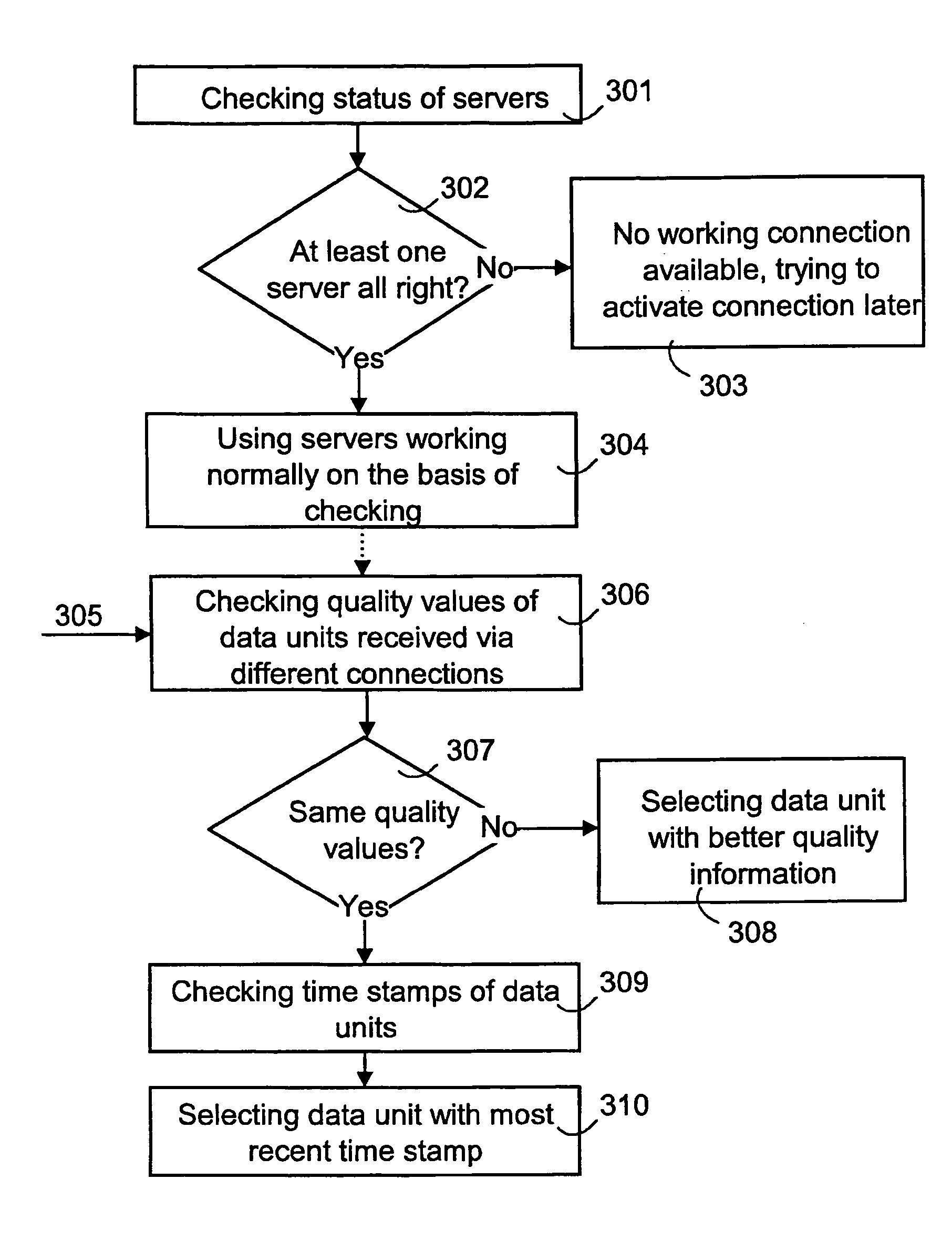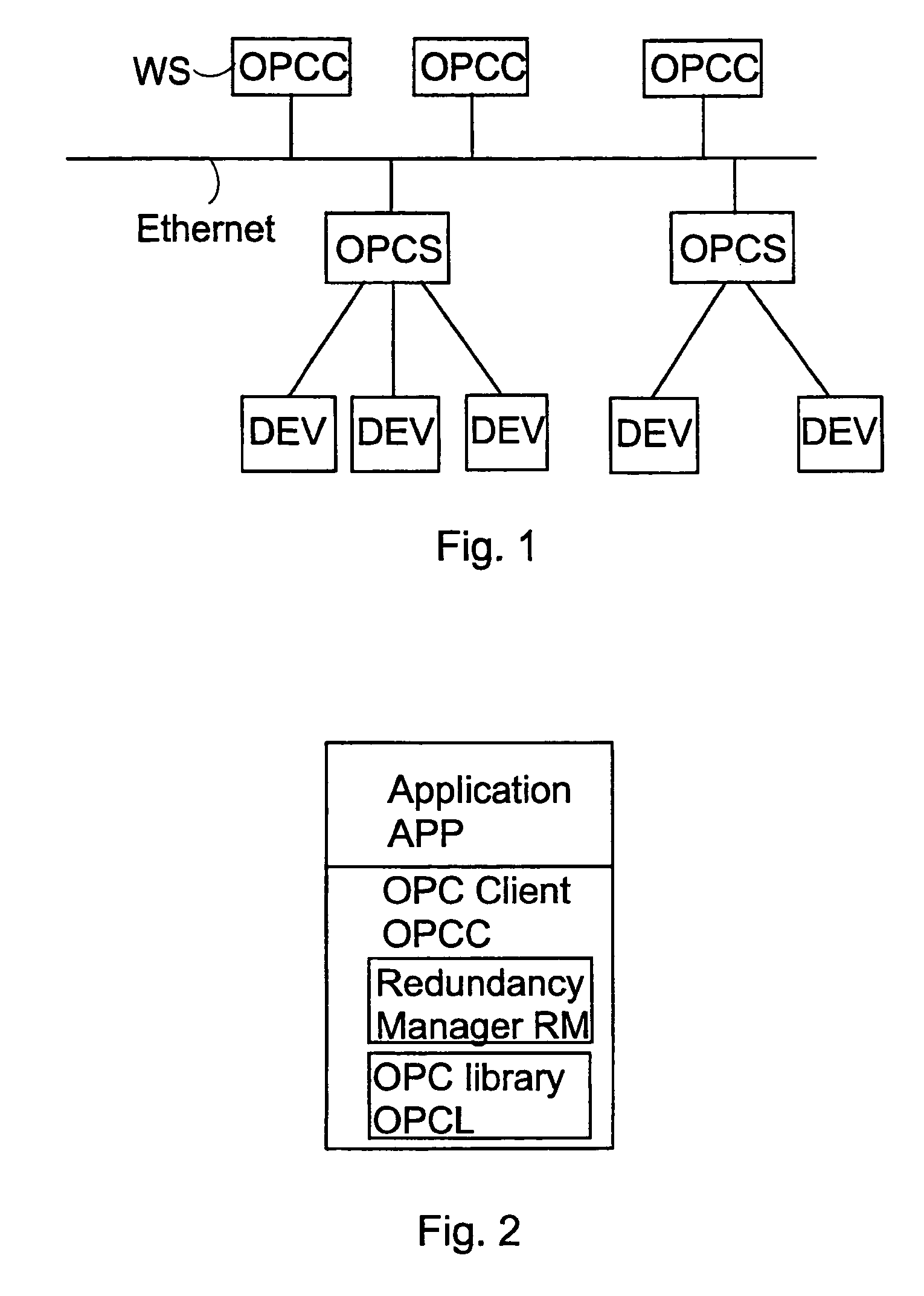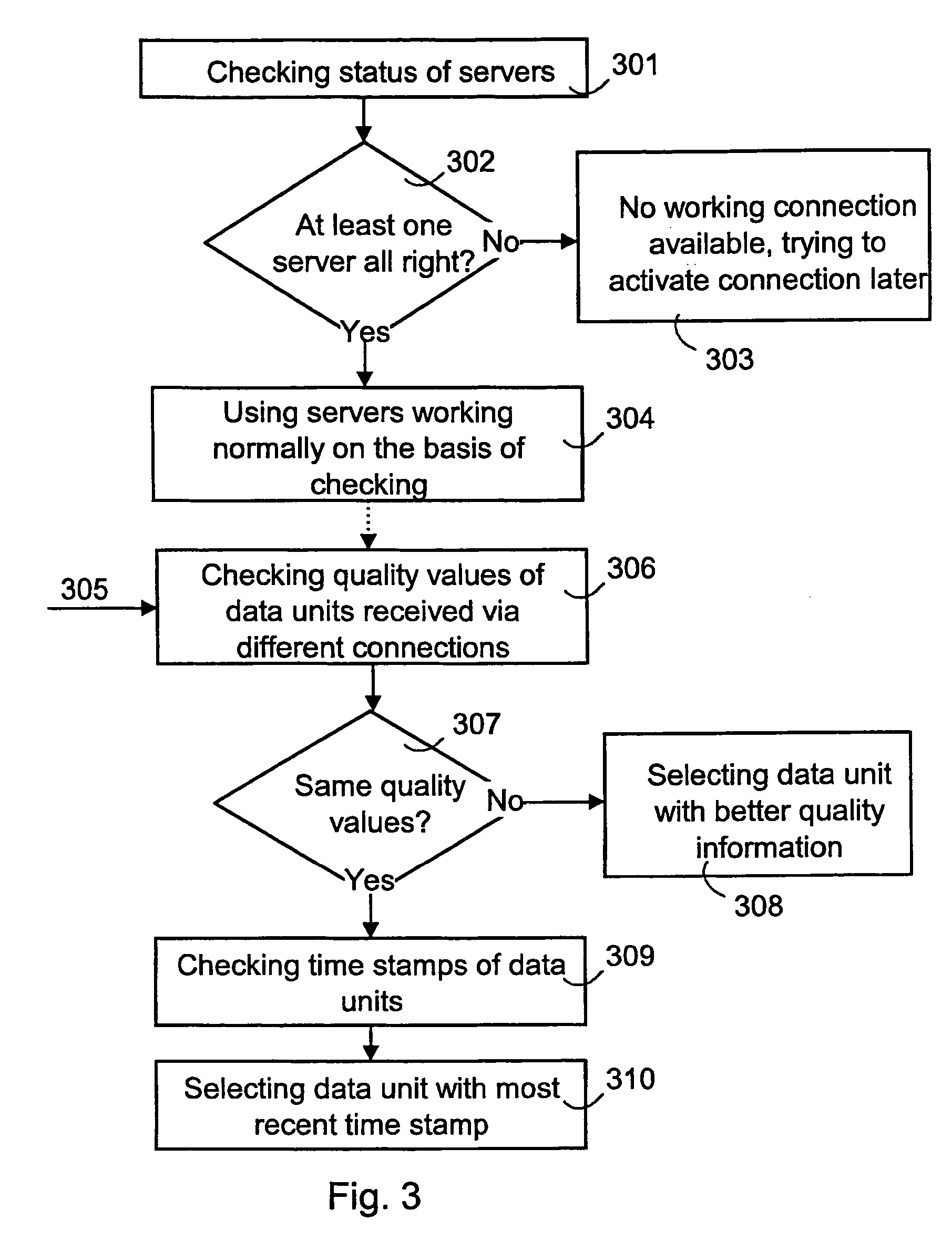Redundancy in process control system
a process control system and redundancy technology, applied in the direction of electrical programme control, program control, instruments, etc., can solve the problems of limited redundancy, large and complex industrial process, and the connection e.g. between the server and the field or another device connected thereto may be completely lost or otherwise subject to interferen
- Summary
- Abstract
- Description
- Claims
- Application Information
AI Technical Summary
Benefits of technology
Problems solved by technology
Method used
Image
Examples
first embodiment
[0036]FIG. 4 illustrates a redundancy configuration wherein redundancy is arranged for an OPC server OPCS (including connections to one or more devices DEV), an OPC client functionality OPCC and an application APP. The servers OPCS provide both OPC clients OPCC with the same data units. Preferably in the manner illustrated in FIG. 3, the OPC clients OPCC select a server and the best ones from among the parallel data units on the basis of the property information on the parallel data units and the predetermined order criteria (on the basis of quality and / or time stamp information) and transmit them to the applications APP. In the embodiment of FIG. 4, preferably one of the applications APP is active, in which case the passive application and the data units provided thereto by the OPCC are used when problems are detected in the operation of the active application. Preferably, the application used in the OPCC is such an application which uses a connection the data units transferred vi...
second embodiment
[0037]FIG. 5 illustrates a redundancy configuration wherein an application APP utilizes two OPC client functionalities OPCC. Redundancy is thus arranged for the OPC server OPCS and the OPC client functionality OPCC. The redundancy manager RM may operate as illustrated in FIG. 3, i.e. it may always select data units delivered to the OPCC via a better logical connection for the application APP. The application APP selects, according to its own criteria, a data unit delivered by another OPCC for its use. The APP may select the data unit on the basis of the properties of its payload, e.g. on the basis of the time stamp determined in the payload. In the embodiments disclosed in FIGS. 4 and 5, it must be ensured that only one of the clients OPCC transmits data (write connection) back to the servers OPCS and further to one or more devices DEV.
third embodiment
[0038]FIG. 6 illustrates a redundancy configuration wherein redundancy is arranged for OPC servers OPCS1, OPCS2, thus providing an OPC client OPCC with parallel logical connections. The RM may select a data unit, preferably in the manner illustrated in steps 305 to 310 in FIG. 3. FIG. 6 illustrates a situation wherein the client device OPCC has a need to receive data units from three devices DEV1, DEV2 and DEV3. Three connection pairs are then formed: 1-1, 2-1; 1-2, 2-2 and 1-3, 2-3. In the example of FIG. 6, it is detected, preferably on the basis of the checking illustrated in FIG. 3, that the data units transferred to the device DEV1 via the connection 1-1- used by the OPC server OPCS1 are of poor quality, or that they are missing altogether, in which case the connection 2-1 of the server OPCS2 and the data units transferred therethrough are used in the application APP of the OPC client device OPCC. However, the connection 2-2 provided by the server OPCS2 for the device DEV2 is ...
PUM
 Login to View More
Login to View More Abstract
Description
Claims
Application Information
 Login to View More
Login to View More - R&D
- Intellectual Property
- Life Sciences
- Materials
- Tech Scout
- Unparalleled Data Quality
- Higher Quality Content
- 60% Fewer Hallucinations
Browse by: Latest US Patents, China's latest patents, Technical Efficacy Thesaurus, Application Domain, Technology Topic, Popular Technical Reports.
© 2025 PatSnap. All rights reserved.Legal|Privacy policy|Modern Slavery Act Transparency Statement|Sitemap|About US| Contact US: help@patsnap.com



